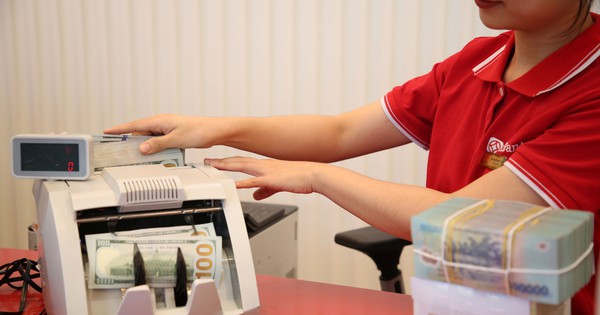As of January 31st, all joint-stock commercial banks have reported their Q4 and full-year 2023 financial results. However, the profit picture for these banks is not uniformly increasing as in previous years, with significant differentiation between large-scale commercial banks and smaller ones.
Impressive figures
The following banks have reported pre-tax profits exceeding 20,000 billion VND: Vietcombank, BIDV, MB, VietinBank, Agribank, Techcombank, ACB. Among them, Vietcombank is the leading bank in terms of profits with a total pre-tax profit of over 41,000 billion VND. Next is BIDV, with a pre-tax profit growth of 21%, approximately 23,000 billion VND.
Other commercial banks that have achieved pre-tax profits exceeding 10,000 billion VND in 2023 include HDBank, VPBank, VIB, as well as banks that have reached nearly tens of thousands of billion VND, such as SHB, Sacombank…

NPLs have a significant impact on the profitability of the banking industry in 2023
Conversely, several banks experienced a sharp decline in profits compared to the previous year, with some even reporting profits in the tens of billion VND range – an unusual phenomenon in previous years. The main reason is that these banks had to significantly increase provisions for credit risks to deal with bad debts.
For example, VIB recorded a pre-provision operating profit of over 15,500 billion VND, a growth of 31% compared to the previous year. However, due to provisions of over 4,800 billion VND, which is 3.8 times higher compared to 2022, VIB only had a net profit of over 10,700 billion VND.
Eximbank only achieved 54.4% of its annual business plan with a pre-tax profit of over 2,700 billion VND. According to Eximbank, this was partly due to the reduction in lending rates to support customers, while the interest expense in 2023 increased significantly. In particular, bad debts increased due to customers facing difficulties, leading to a higher provision expense.
Bad debt pressure
Assoc. Prof. Nguyen Huu Huan from the University of Economics Ho Chi Minh City commented that the profitability of the banking industry in 2023 still had bright spots, but it did not fully reflect the real situation when many customer loans were being restructured under Circular 02 on rescheduling or postponing debts by state-owned banks. If we calculate correctly, the profitability picture will not be as “bright” as it is now when many banks have to make even greater efforts in provisioning for credit risks to deal with and recover bad debts.
“According to Wigroup data, the bad debt ratio in the banking system is increasing rapidly, exceeding the 3% threshold, while the coverage ratio is trending downwards, below 100% instead of always being above 100% as before.
This shows that banks no longer have many “spares” for provisioning. After Circular 02 expires (June 2024), it is highly likely that the bad debt ratio in the entire system will increase further when bad debts start to be written off” – Assoc. Prof. Nguyen Huu Huan said.
For example, ACB, for the first time, achieved a consolidated pre-tax profit exceeding 20,000 billion VND, a growth of 17.3% compared to the previous year and completed its annual plan, but bad debt also increased to 1.21%. Similarly, MB stated that the bad debt ratio in 2023 also increased to about 1.4% in the context of the rising bad debt trend in the banking industry.
Mr. Nguyen The Minh, Director of Securities Analysis at Yuanta Vietnam Securities Company, also believed that the profitability of commercial banks in 2024 would be less bright when the net interest margin (NIM) is no longer high as in previous years due to the need to maintain low lending rates.
Moreover, starting from 2023, state-owned banks are allowed to pay dividends in cash after many years of distributing dividends in stocks, so striving for high profits to distribute cash dividends to shareholders is appropriate.
“In addition, increasing profits is not easy when the bond market has not recovered strongly, and sectors that used to be considered as the “golden goose” of banks, such as insurance sales, are no longer so bright. Many banks have not fully provisioned for restructured loans, and the pressure to fully provision this year is significant” – he added.
In this context, some experts have recommended that state-owned banks carefully consider whether to extend Circular 02 and continue to disclose bad debt figures transparently to give investors a reasonable expectation of the system’s situation.
A representative from the State Bank of Vietnam said that despite numerous warnings from regulatory agencies, the bad debt ratio in the credit institution system has still been increasing rapidly recently. According to the State Bank, the increase in bad debts is due to businesses and individuals borrowing money but not having the ability to repay the debt in the context of economic difficulties and partly impacted by the COVID-19 pandemic…
Currently, the banking industry is making efforts to implement solutions to enhance the handling of bad debts, especially by increasing provisions for credit risks and intensifying the sale of collateral assets such as real estate to recover debts.















